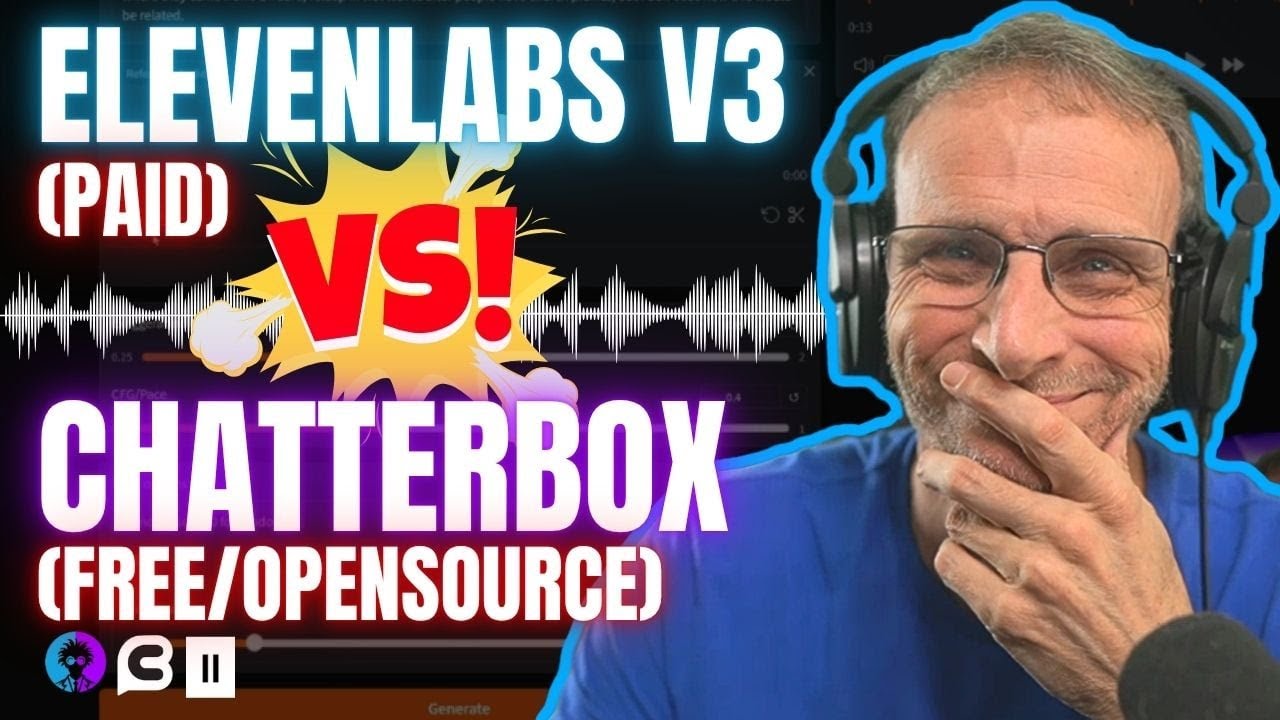The video compares ElevenLabs V3, a paid, advanced voice synthesis platform known for high-quality, customizable, and realistic speech, with Chatterbox, a free, simple tool suitable for basic text-to-speech needs. It concludes that ElevenLabs V3 is ideal for professional use due to its superior features, while Chatterbox is a good option for casual users seeking quick and easy solutions on a budget.
The video provides a comparative analysis of ElevenLabs V3, a paid voice synthesis platform, and Chatterbox, a free alternative. It begins by introducing both tools, highlighting their primary functions in generating realistic speech from text. ElevenLabs V3 is noted for its advanced voice cloning capabilities, offering high-quality, customizable voices suitable for professional use. Chatterbox, on the other hand, is presented as a more accessible option that provides basic text-to-speech features without any cost, making it appealing for casual users or those on a budget.
The presenter then delves into the features of ElevenLabs V3, emphasizing its superior voice realism, extensive voice customization options, and the ability to clone voices with minimal input. The platform’s user interface is described as intuitive, allowing users to easily generate and fine-tune speech outputs. Additionally, ElevenLabs V3 supports multiple languages and offers API access, making it suitable for developers and businesses seeking scalable solutions. The paid model is justified by these advanced features and the high quality of the generated voices.
In contrast, Chatterbox is examined as a straightforward, free tool that provides basic text-to-speech functionality. It is praised for its simplicity and ease of use, making it ideal for quick projects or users who do not require highly realistic voices. However, the video notes that Chatterbox’s voice quality and customization options are limited compared to ElevenLabs V3. It lacks advanced features like voice cloning and multi-language support, which may restrict its use for more demanding applications.
The video then compares the performance of both platforms through sample voice outputs. ElevenLabs V3’s voices are shown to sound more natural and expressive, closely mimicking human speech nuances. Chatterbox’s voices, while clear, are more robotic and less dynamic. The presenter highlights that the choice between the two depends on the user’s needs—professional, high-quality voice synthesis versus a free, easy-to-use tool for basic tasks.
In conclusion, the video summarizes that ElevenLabs V3 is a powerful, feature-rich platform suitable for professional and commercial purposes, justifying its paid status. Chatterbox remains a viable option for casual users or those with limited budgets who need simple, quick text-to-speech solutions. The decision ultimately hinges on the user’s specific requirements for voice quality, customization, and budget constraints.
